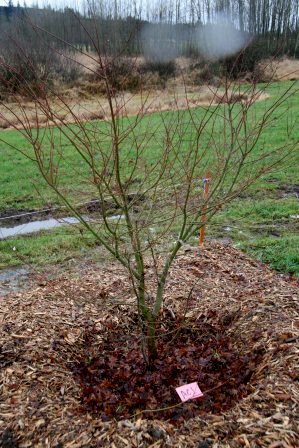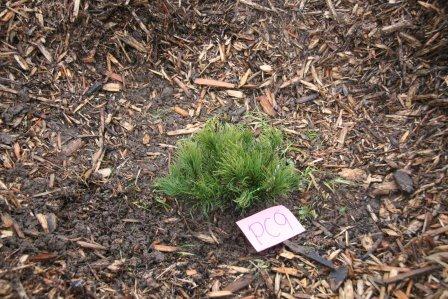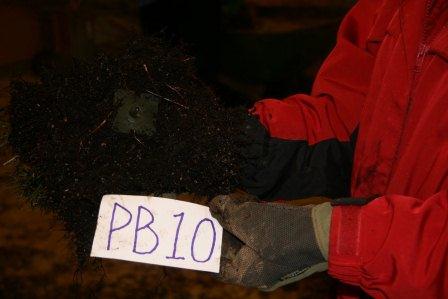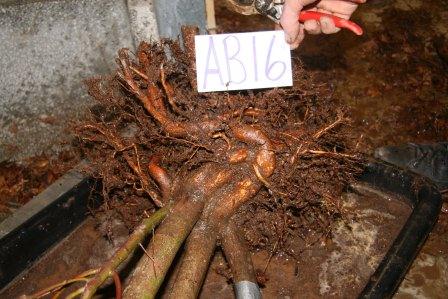
So much good stuff to read back through. The Garden Professors really bring the straight poop on so many topics!
July
Post: Podcasts are here! by Linda.
Complete with a pleasant musical intro and background, Linda’s info-packed and professionally-produced podcast “The Informed Gardener” made the rest of us look under-achieving. Take some time this winter and work back through them, if you haven’t had a chance.
August
Post: Sunday Bloody Sunday by Jeff.
I’m one of those “let me tell you what stupid thing I did yesterday” people, and I really appreciate it when other folks ‘fess up to messing up in an effort to keep you from doing the same. Jeff used a 20% vinegar solution to kill some garden weeds, and ends up killing a little froggy in the process. He even posts a photo of the wee corpse. So is “natural” always better? This post really makes the point of “apparently not”.
September
Lots of great posts – Linda’s post and photos of the Bartlett Tree Expert’s research arboretum was fascinating. I keep meaning to check it out when passing through Charlotte NC. As happens here on occasion, a commenter took exception, this time to photos and descriptions of the research trials; suggesting she was endorsing Bartlett’s entire corporate philosophy/menu of services etc. Lots of back-and-forth ensued. Drama on the GP!
Bert went to a LOT of trouble to get our reader’s input in selecting an upcoming post-transplant tree experiment – Be a Part of History post. Bert notes “Of course, as with any major research project, the first step in the rigorous scientific process is to come up with catchy acronym for the study. I propose ‘the SOcial MEdia DEsigneD TRansplant ExpErimental Study’ or SOME-DED-TREES for short.” I have since stolen this idea for my own research (I KNEW something was missing). Good ideas flowed forth from our commenters.
Bert then set up a survey in October “Vote Early and Often”, the results of which are posted as “The People Have Spoken.”
October
Also in October was the hilarious “Amazing Water Slices” post by Linda. This was an easy one for her, because, the hilarity was (unintentionally) supplied by quotes and photos from the actual sales information on this purported “best new garden product of 2011”.
November
I’ll just file this under “live and learn” in regards to blogging. I believe I failed in stating the importance (“So we’ll just guess from now on…”) of the decision by the USDA/NASS to eliminate several Agriculture survey programs that provide annual reports on the economic impacts of various crops/commodities/sectors. If you really think a fiscal report that states the importance of a particular crop is just B.S. government interference (though most of eliminated crops/sectors are small-farm related), please re-read the “why I care” part. However…if you WERE concerned and just didn’t say so in the post comments, you’ll be relieved to know several programs were reinstated within 30 days (a big hubbub was apparently raised) including three dear to my heart, the Floriculture report, the Bee and Honey report, and the annual Hops Production report. Note to self: do not mention The Government ever again in a blog post.
December
Bert’s “Another victory for the politics of destruction” post was clear, concise, non-partisan, and well done. Unfortunately, he mentioned The Government. Nutshell: a grower-initiated, Christmas tree marketing check-off effort was framed as “Obama’s Christmas Tree Tax” to the point the program was pulled. I had thought about posting on this very topic, but Bert beat me to it and as someone who actually works with Christmas Tree Growers, he was much more knowledgeable. Plus he got to enjoy the anti-you-name-it comments (which he responded to very graciously)
Final thoughts regarding 2011…this blog is an old-fashioned, goodness-of-our-heart effort to bring you topics we think are important, provide some entertainment with factoids buried within, untwist our knickers, and generally try to be thought-provoking and/or helpful. Linda has done a terrific job hosting it and riding herd on the rest of us.
Does every post ooze wisdom and revelation? No. But lots of them do, complete with NO annoying advertising. I noticed a trend reading back through 2011 – many of our “regular” commenters ceased commenting (though several still do – thank you!). The number of posts in 2011 with one or zero comments was greater than in 2010. It’s a challenge to take the time and effort to post something, and then…*crickets.* I do understand how interest in a particular blog waxes and wanes. There are about one million gardening blogs (only slightly fewer than foodie blogs) vying for your attention; some of you may just be blogged out.
Hate "Weird Plant Wednesdays"? Want more arguments on root washing? Can’t get enough mulch, compost tea, or Christmas trees? Need more feedback on your feedback? Please take this opportunity to tell us what you think at Linda’s survey. And thank you for your patronage.
</d









